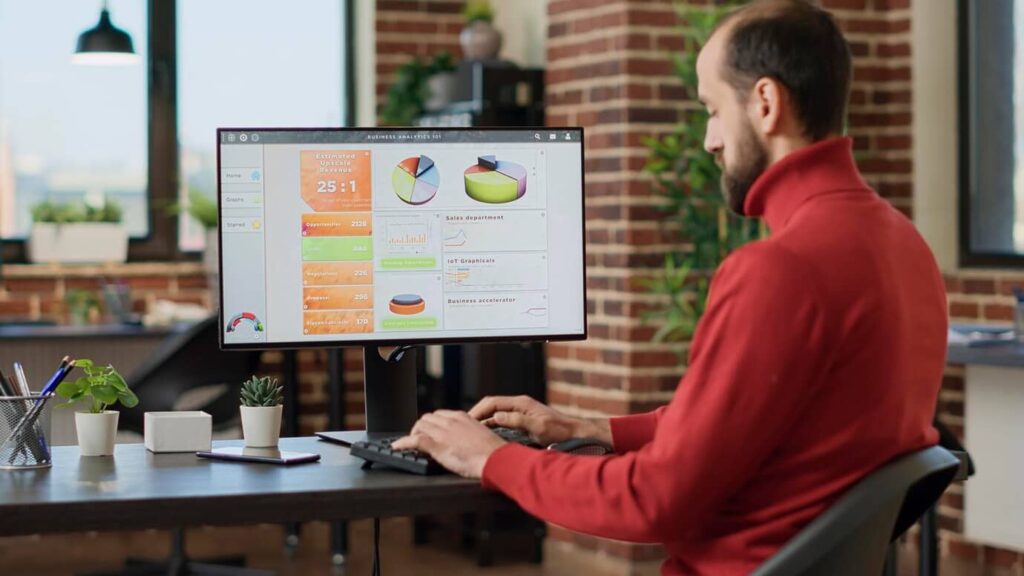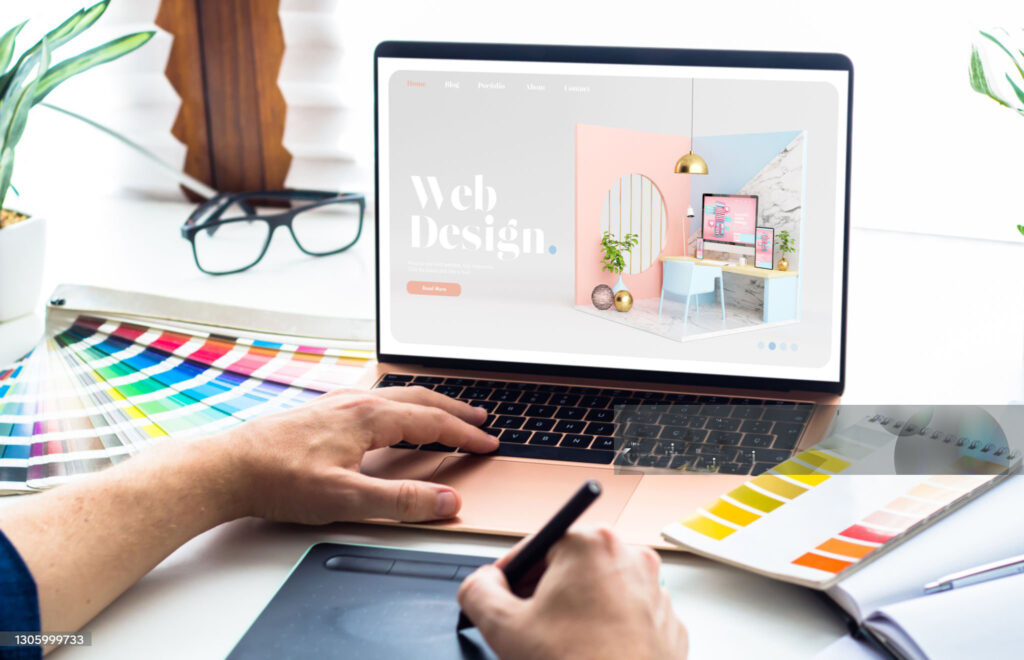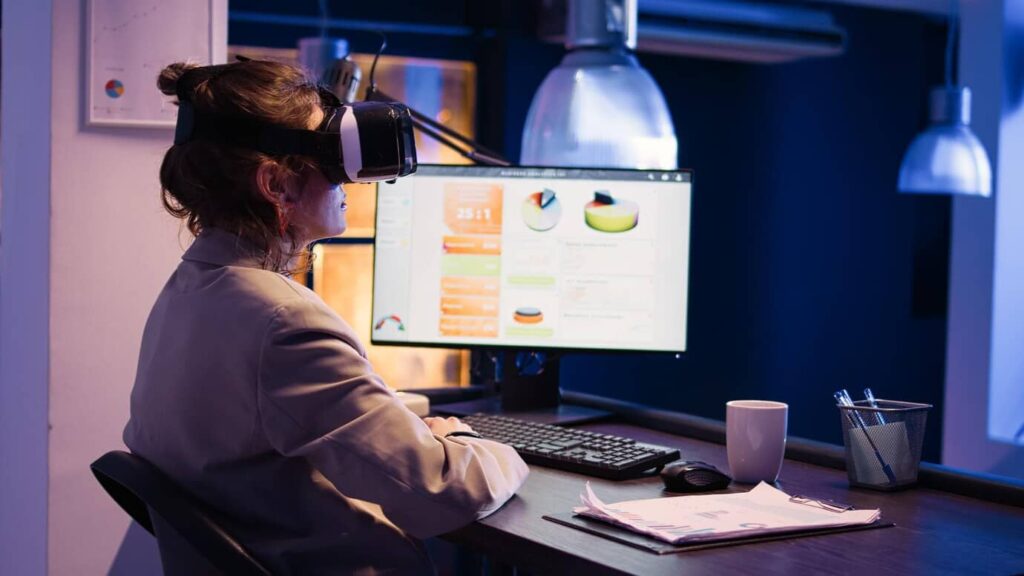How Can Website Design Services Help Improve Site Navigation And Reduce Bounce Rates?

Website design services can enhance site navigation. They also help reduce bounce rates.
A well-designed website is key to keeping visitors engaged. When users find it easy to navigate, they stay longer. This means lower bounce rates and higher engagement. Effective design improves user experience, making it simple to find information. It also ensures faster loading times and mobile responsiveness.
These factors contribute to a seamless browsing experience. Website design services focus on these elements to create user-friendly sites. They aim to keep visitors on the page, exploring and interacting with content. By refining navigation and reducing bounce rates, these services boost overall site performance and user satisfaction.

Importance Of Site Navigation
Site navigation is a crucial aspect of web design. It helps users find what they need quickly and easily. If a website is difficult to navigate, visitors may leave the site, leading to high bounce rates. A well-designed navigation system can improve user experience and keep visitors on the site longer. This can also have positive effects on SEO.
User Experience Impact
Good site navigation enhances user experience. Visitors can locate information without frustration. This increases their satisfaction and encourages them to explore more pages.
Consider these points to improve user experience:
- Clear labels: Use simple and clear labels for menus and links.
- Consistent layout: Keep the navigation layout consistent across all pages.
- Search functionality: Include a search bar to help users find content quickly.
Seo Benefits
Effective site navigation is important for SEO. Search engines use site structure to understand and index your content. A well-organized website can rank higher in search results.
Key benefits for SEO:
- Better crawling: Search engines can crawl your site more effectively.
- Improved link juice: Proper navigation distributes link juice across pages, boosting SEO.
- Lower bounce rates: A user-friendly site keeps visitors longer, reducing bounce rates.
Use these tips for SEO-friendly navigation:
| Tip | Benefit |
|---|---|
| Use breadcrumbs | Helps users and search engines understand the site structure |
| Optimize URL structure | Creates clear and descriptive URLs |
| Include a sitemap | Makes it easier for search engines to index your site |

Common Navigation Issues
Website design services can greatly help in enhancing site navigation. Yet, many websites face common navigation issues. These issues can frustrate users and increase bounce rates. Understanding these problems is key to solving them.
Complicated Menus
Menus should guide users effortlessly. Complicated menus confuse visitors. They make it hard to find what they need. Here are some signs of complicated menus:
- Too many menu options
- Unclear labels
- Nesting multiple levels deep
Use simple, clear labels. Limit the number of options. Ensure users can find content quickly. This helps keep them on your site longer.
Broken Links
Broken links are a significant issue. They lead to dead ends. Users get frustrated and leave. Common causes of broken links include:
- Changed URLs
- Deleted pages
- Incorrect URLs
Regularly check for broken links. Use tools to scan your site. Fix any issues promptly. This maintains a smooth user experience.
Addressing these common navigation issues can greatly improve your site. Users will have a better experience. Your bounce rates will decrease. Website design services can help you achieve these goals.
Role Of Website Design Services
Effective website design services enhance site navigation, making it user-friendly. This reduces bounce rates and keeps visitors engaged longer.
Website design services play a key role in improving site navigation. They help reduce bounce rates. A well-designed website ensures users find what they need quickly. This makes them stay longer and explore more.
Expert Insights
Experts in website design know how to create user-friendly layouts. They understand how people interact with websites. They use this knowledge to design intuitive navigation. This makes it easy for visitors to find information. Clear paths and logical flow keep users engaged.
Custom Solutions
Every website has unique needs. Custom solutions address these specific requirements. Designers create tailored navigation structures. They consider your target audience and business goals. This personalized approach improves user experience. It helps keep bounce rates low.
Good design considers mobile users too. Mobile-friendly navigation is crucial. It ensures a seamless experience across devices. This encourages visitors to stay on your site longer.
Improving User Interface
Improving user interface is crucial for enhancing website navigation and reducing bounce rates. A well-designed interface makes it easier for users to find what they need. This keeps them engaged and encourages them to explore more pages on your site. Let’s look at some key aspects of improving user interface.
Intuitive Layouts
An intuitive layout ensures users can navigate your site with ease. Organize content in a logical manner. Use clear headings and subheadings to guide users. Include a search bar for quick access to information.
Consider using a navigation menu that is simple and easy to understand. Group related items together. This helps users find what they need without frustration.
Avoid clutter. Too many elements on a page can overwhelm users. Focus on a clean design with plenty of white space. This makes the content more readable and easier to navigate.
Responsive Design
A responsive design adapts to different screen sizes. This ensures a good user experience on all devices. Mobile users should have the same easy navigation as desktop users.
Use flexible grids and layouts. This allows your site to adjust to various screen sizes. Images should scale properly without losing quality. Text should remain readable on smaller screens.
Test your site on multiple devices. Make sure the navigation works well on smartphones, tablets, and desktops. A responsive design improves user satisfaction and reduces bounce rates.
Enhancing User Experience
Enhancing user experience is crucial for any website. An intuitive and engaging site keeps visitors happy and reduces bounce rates. Effective website design services play a key role in this. They ensure that the site is easy to navigate and visually appealing.
Consistent Design
A consistent design creates a seamless browsing experience. It helps users feel comfortable and familiar with the site. Consistency involves using the same fonts, colors, and layouts across all pages. This practice reduces confusion and keeps the user’s focus on the content.
Here are some elements of a consistent design:
- Uniform typography
- Standard color palette
- Consistent button styles
- Regular layout patterns
Consistency also extends to navigation menus. Clear, predictable menus help users find information quickly. This reduces frustration and bounce rates.
Accessibility Features
Accessibility features ensure that everyone can use the site. This includes people with disabilities. Adding these features improves the user experience for all visitors. Here are some key accessibility features:
| Feature | Benefit |
|---|---|
| Alt text for images | Helps screen readers describe images |
| Keyboard navigation | Allows navigation without a mouse |
| Readable fonts | Improves readability for everyone |
| Contrast ratio | Makes text easy to read against backgrounds |
Incorporating these features makes the site inclusive. It ensures that all users have a positive experience. This can lead to longer visits and lower bounce rates.
Reducing Bounce Rates
A high bounce rate can harm your website’s success. Visitors leave quickly if they don’t find what they need. Good website design services can help. They improve site navigation and content.
Engaging Content
Your content should capture the visitor’s attention. Engaging content keeps them on your site longer. Use clear and concise language. Break up text with headings, images, and videos. This makes the content easier to read and understand.
- Headings: Use clear and informative headings.
- Images: Include relevant images to break text.
- Videos: Add videos to explain complex topics.
Visitors appreciate good content. They stay longer and explore more pages. This reduces the bounce rate.
Clear Call-to-actions
Call-to-actions (CTAs) guide visitors. They tell them what to do next. Clear CTAs improve site navigation. Use buttons and links that stand out. Make sure they are easy to find.
Here are some tips for effective CTAs:
- Be clear: Use simple and direct language.
- Be specific: Tell visitors exactly what to do.
- Be prominent: Use contrasting colors for CTA buttons.
Well-placed CTAs help visitors navigate your site. They know what to do next. This improves their experience and lowers the bounce rate.
Case Studies
Case studies provide real-world examples of how website design services can transform site navigation and reduce bounce rates. By examining successful redesigns and metrics improvements, we can gain insights into effective strategies.
Successful Redesigns
One case study involves a popular e-commerce site. The old design was cluttered and confusing. Users struggled to find products. The bounce rate was high.
The redesign focused on simplicity. Clear menus and a search bar were added. The result? Visitors easily found what they needed.
Another case study features a tech blog. The initial design had slow load times and poor mobile optimization. Readers quickly left the site.
The redesign prioritized speed and mobile-friendliness. The site now loads in under three seconds. Mobile users enjoy a seamless experience.
Metrics Improvement
After the e-commerce site redesign, metrics showed significant improvement. The bounce rate dropped by 30%. Average session duration increased by 25%.
The tech blog also saw positive changes. The bounce rate decreased by 20%. Page views per visit doubled. These metrics highlight the power of effective design.
These case studies demonstrate the importance of website design services. Improved navigation and lower bounce rates lead to better user experiences. Happy users stay longer and engage more.

Choosing The Right Service
Finding the right website design service can transform your site’s navigation and reduce bounce rates. A well-designed website ensures users find what they need quickly and easily. This keeps them engaged and encourages them to explore more. Selecting the best service provider requires careful consideration of several factors.
Evaluating Portfolios
Reviewing portfolios helps you understand the quality of work a service can deliver. Look for:
- Diverse projects showing versatility
- Consistency in design quality
- Sites that load quickly and function smoothly
Compare portfolios to see if the design style matches your brand. This step is crucial in ensuring your website will align with your vision.
Client Testimonials
Client testimonials provide insights into the service’s reliability and effectiveness. Positive feedback from past clients can indicate:
- Timely delivery of projects
- Good customer support
- Successful improvement in site navigation
Reading testimonials helps gauge the overall satisfaction of previous clients. It can also highlight any potential issues you might face.
By carefully evaluating portfolios and client testimonials, you can choose a service that will enhance your website’s navigation and reduce bounce rates effectively.
Frequently Asked Questions
How Do Design Services Improve Site Navigation?
Design services enhance user experience by creating intuitive menus and layouts. This helps users find information easily.
Can Good Design Reduce Bounce Rates?
Yes, an appealing design keeps visitors engaged, reducing the likelihood of them leaving quickly.
Why Is Intuitive Navigation Important?
Intuitive navigation ensures users can find what they need fast. This improves overall satisfaction and retention.
What Role Does Mobile Design Play?
Mobile-friendly design ensures smooth navigation on all devices. It improves user experience and reduces bounce rates.
Conclusion
Good website design services make navigation easy for users. They help visitors find information quickly. This reduces frustration and keeps them engaged. Better navigation leads to lower bounce rates. Users stay longer and explore more pages. A well-designed site improves user experience.
It builds trust and encourages return visits. Investing in professional design services is wise. It helps your site stand out and perform better.



